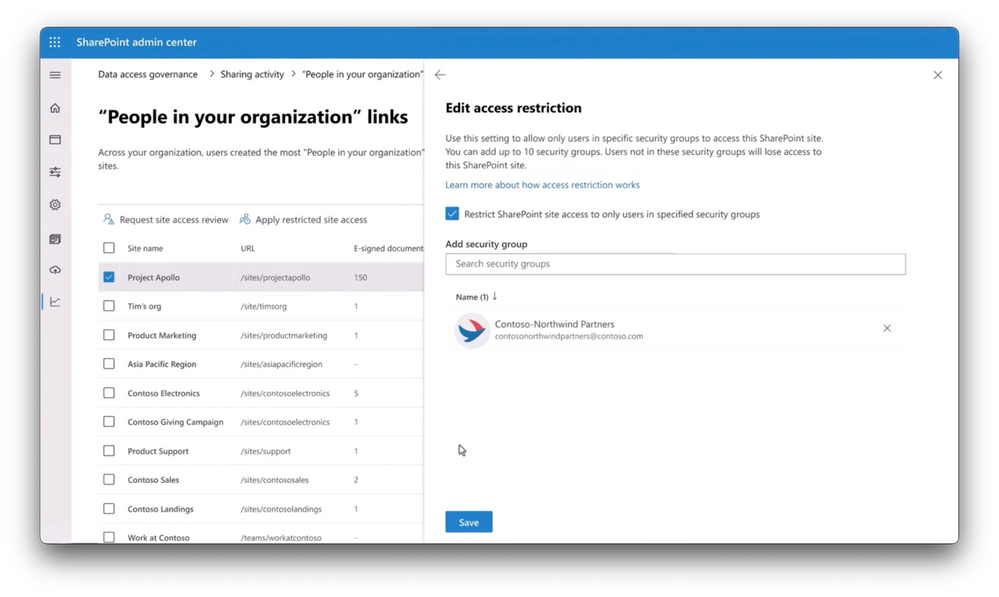We have a comprehensive Copilot implementation guide that covers the actions required to prepare an organization for the adoption of the intuitive tool.
Microsoft Copilot is an AI-powered assistant integrated into Microsoft 365, Dynamics 365, and other Microsoft products. It uses advanced generative AI, including models like GPT, to help users work more efficiently. Copilot can draft emails, generate reports, analyze data, create content, and automate routine tasks. It integrates directly into apps like Word, Excel, and Teams, offering real-time suggestions, automating workflows, and enhancing decision-making, all while working within the context of your specific tasks. Essentially, it’s like having a smart, context-aware assistant embedded across Microsoft tools.

Businesses that implement Copilot experience increased efficiency by automating routine tasks, freeing up time for more strategic work. Additionally, the AI enhances accuracy by reducing human error, supports faster decision-making with instant insights, and improves collaboration with real-time suggestions that boost teamwork across departments. In fact, according to Microsoft, 70% of Copilot users are saying they’re more productive and 68% say it’s making them more efficient.
To boost your company’s efficiency, follow the steps outlined in our Copilot Implementation Guide:
1. Understand Microsoft Copilot:
Before implementation, ensure that your team comprehends the capabilities and limitations of Copilot. Familiarize yourself with its features, including best practices, documentation, and natural language interactions.
Check out our Copilot How To Series
2. Assess Organizational Readiness:
Evaluate your organization’s readiness for Copilot adoption. Consider factors such as existing workflows, technical proficiency, and cultural openness to AI-driven tools.

3. Data Security and Privacy:
- Data Classification: Identify sensitive data that Copilot may encounter. Classify it appropriately (e.g., public, internal, confidential).
- Access Controls: Set up permissions to restrict access to sensitive code or data. Define roles and responsibilities for Copilot usage.
- Encryption: Ensure data transmission between Copilot and your systems is encrypted.
- Compliance: Align with industry standards (e.g., GDPR, HIPAA) and internal policies.
See how you can use Microsoft 365 to enhance data security and privacy
4. Licensing and Subscriptions:
- Acquire Licenses: Purchase the necessary licenses for Copilot. Consider user-based or organization-wide subscriptions.
- License Management: Keep track of licenses, renewals, and usage.
5. Staff Training and Onboarding:
- Training Sessions: Conduct workshops to introduce Copilot to developers, data scientists, and other relevant staff.
- Best Practices: Train users on how to maximize Copilot’s productivity and integrate it into their workflows.
6. Integration with Existing Tools:
- IDE Integration: Set up Copilot within your preferred integrated development environment (IDE).
- Version Control: Ensure Copilot works seamlessly with your version control system (e.g., Git).
- CI/CD Pipelines: Integrate Copilot into your continuous integration and continuous deployment pipelines.
7. Monitor Usage and Performance:
- Metrics and KPIs: Define key performance indicators (KPIs) to measure Copilot’s impact.
- Feedback Loop: Encourage users to provide feedback on Copilot’s suggestions.
- Monitoring Tools: Implement monitoring solutions to track Copilot’s performance and resource utilization.
8. Maximizing ROI with our Copilot Implementation Guide:
- Project Scoping: Identify specific use cases where Copilot can add value (e.g., code refactoring, documentation generation).
- Efficiency Metrics: Measure time saved, code quality improvements, and reduced debugging efforts.
- Collaboration Benefits: Highlight how Copilot fosters collaboration among team members.
9. Partner with a Microsoft Cloud Solutions Specialist:
- Choose the Right Partner: Collaborate with a Microsoft Cloud Solutions Partner specializing in Security, Modern Work, Azure, and Infrastructure.
- Expertise: Leverage their expertise to tailor and take advantage of the Copilot implementation guide to meet your organization’s unique needs.
- Risk Mitigation: Partners can guide you through potential pitfalls and ensure a successful adoption.
Remember, successful Copilot adoption involves a holistic approach. By following the steps laid out in our Copilot implementation guide, and partnering with experts, your organization can harness the full potential of Microsoft Copilot while safeguarding data and maximizing ROI. 🚀
For personalized assistance and expert guidance on Microsoft Copilot, contact 360 Visibility, your trusted Microsoft Cloud Solutions Partner. Let’s transform your organization’s AI experience together!


